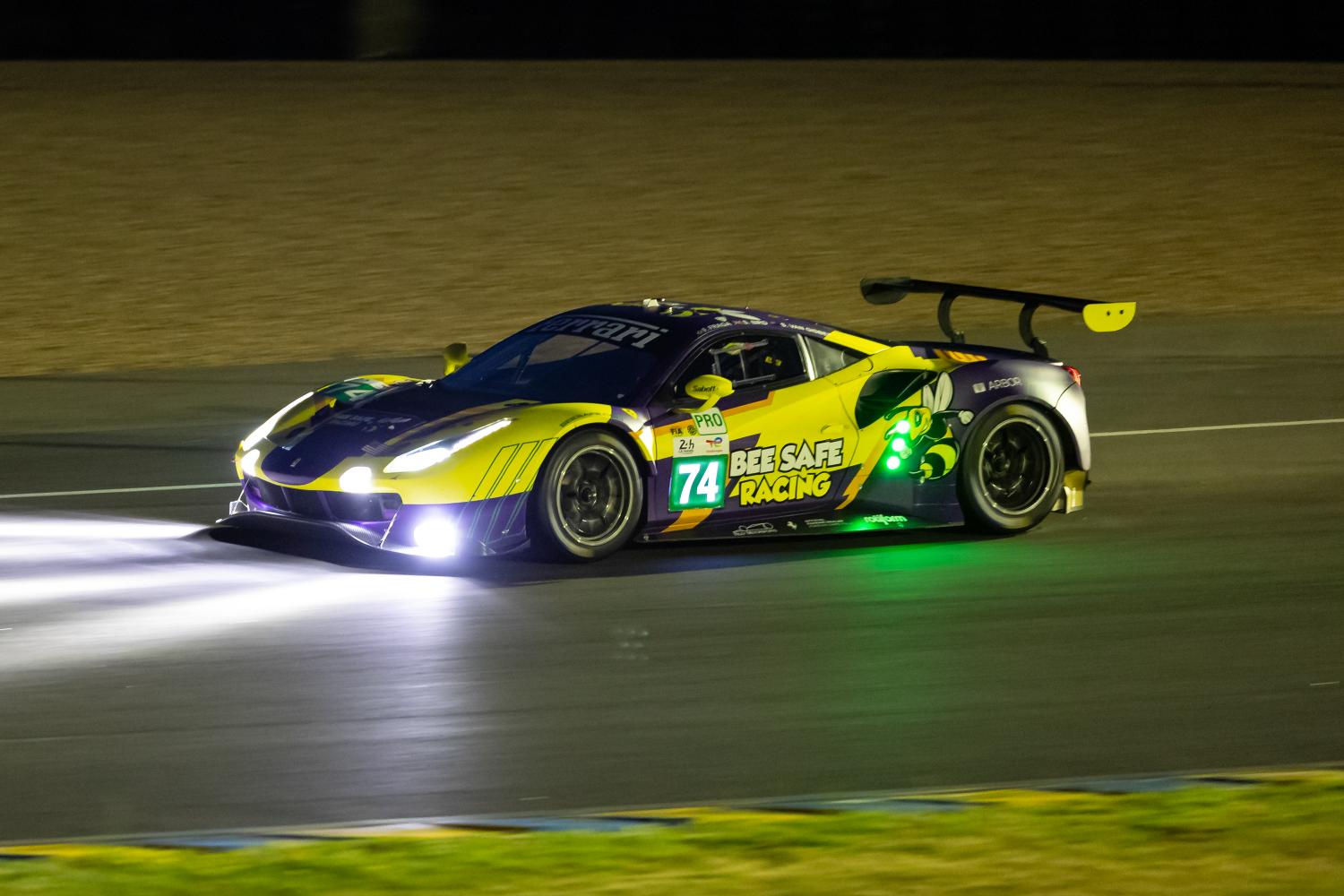24 HOURS CENTENARY – PERPETUAL INNOVATION ⎮ While fog lamp technology has proven itself from the very first years of the race (for example Lorraine-Dietrich's hat trick in 1926), the 24 Hours has also seen the evolution of night lighting, from the incandescent lamp of the first runnings to the LED headlights of today.
Invariably, a significant stretch of a 24-hour race takes place at night. Hopefully, the car's lighting allows the driver to see in front of him/her as far and as clearly as possible! Before we get to the current LED headlights, let's first go back in time…
The first automobiles had succinct lighting, a candle and a reflector with less than ideal effectiveness. After certain attempts with gas, electricity quickly came to the rescue. It became necessary in order to start cars, which naturally benefitted the lighting. An incandescent lamp, consisting of a filament in a glass bulb that ran off of an electric current, was reflected in a reflector whose shape concentrated the light and focused it on a far away point on the road.
The evolution of headlights at the 24 Hours
From the first runnings of Le Mans, the cars were equipped with incandescent bulb headlights. A generator was used to deliver the necessary electric current to the lamps, but as it delivered no more than six volts at the time, power to the bulbs was limited, rendering them relatively insufficient.
The switch to 12 volts in the 1950s increased the power of the bulbs and the reflectors became shinier with a more complex shape. The profiling of the cars, especially at the front, encouraged a firm limitation to the diameter of the headlight lenses, perfect for so-called complex surface reflectors.
In the 1970s, the arrival of halogen headlights significantly improved lighting efficiency. They still used an incandescent lamp, but the bulb was filled with a gas composed of iodine and the tungsten filament could then be heated to very high temperatures. Admittedly, the iodine headlights consumed more current, but their efficiency increased tenfold.
Xenon headlights, sometimes referred to as gas-discharge lamps, represented a new technological breakthrough in the 1990s. Filaments were replaced by an electric arc propagated by xenon gas between the plus and minus electrical terminals. The arc offered lighting power far superior to the previously utilised filaments. The dimensions of the lenticular headlights also made it possible to reduce the diameter of the optics even more and to concentrate the beam in lenses. But little by little, cars returned to larger diameter optics, the lenses unfortunately absorbing too much light. You recognise xenon headlights by their very white light with bluish reflections because the temperature of the light emitted is very high (nearly 10,000 Kelvin).
LEDs deliver
The last innovation to date started in the 2010s with the introduction of LED headlights. The technology moved from electricity to electronics as LEDs (Light Emitting Diodes) require an electronic circuit to be powered.
Several diodes replaced bulbs to form a powerful beam with a light temperature of approximately 5,000-6,000 Kelvin (cool white). LEDs have several advantages: they consume very little current compared to xenon or halogen bulbs, so they can be multiplied to produce more light; some have shorter ranges to illuminate the front of the car, others longer ranges to illuminate up to nearly 800 m; their small size allows them to be better integrated into bodywork; they can be equipped with a small magnifying glass on the front to widen the beam, or a small reflector behind to extend the range.
Jean-Philippe Boyer (ACO)
In tandem with the evolution of racing car headlights, reflectors and bulbs have been reproduced on production cars, gradually improving the lighting of everyday road cars. 12 V headlights, halogen headlights, xenon headlights and now LED headlights have gradually become commonplace on production models.
Matrix LED headlamps allow a driver to switch to low beam mode while remaining in full beam, the diodes targeting the oncoming car obscured during the low beam setting. That technology, extremely effective on high-end production cars, remains completely useless at a race such as the 24 Hours of Le Mans. Racing drivers only have full headlights since no one is ever coming at them!
PHOTOS (Copyright - ACO/Archives): LE MANS (SARTHE, FRANCE), CIRCUIT DES 24 HEURES, 2019-2022 24 HOURS OF LE MANS. From top to bottom: four LED snapshots - in night mode on the track (#74 Ferrari), on a Hypercar (#709 Glickenhaus), in the box at night (#54 Ferrari) and after an accident (#66 Ford).




